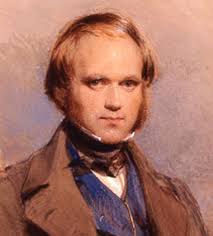http://animoto.com/play/ojRdjv8pcmQRNI0B3x87Mw?utm_source=project_complete_email&utm_medium=email&utm_campaign=project_complete_email&utm_content=challenger#
Resting potential- membrane potential of a nerve cell at rest
- exists because of differences in the ionic composition of the extracellular & intracellular fluids of the axonal membrane
- *Changes in the axonal membrane potential of a neuron are what give rise to nerve impulses.
Stimulus affects the membrane's permeability to ions.
- graded potential with a magnitude proportional to the size of the stimulus
- *stimulus permeability to Na+ and K+
- *Why do we have membranes? To BALANCE us
Action potential (nerve impulses)
- the all-or-none depolarization of the membrane of a nerve cell
- opens voltage-gated sodium channels
- Na+ ions enter the cell --> bringing membrane potential to a positive value
- Na+ gates then close --> cell returns to a resting potential
- potassium pump helps return to resting potential
Saltatory conduction- rapid transmission of nerve impulse along an axon resulting from the action potential the action potential jumping from one node of Ranvier to another, skipping the myelin-sheathed regions of the membrane.
- action potentials are propagated along the axon
- jumping of nerve impulse between nodes of Ranvier (areas on the axon NOT COVERED by myelin sheaths = accelerated conduction of the nerve impulse
- What triggers jumping?
- the signal is conducted from the axon of a presynaptic cell to the dendrite of a postsynaptic cell via an electrical or chemical synapse (electrical=ion) (chemical=acetecholyine? Please comment if I am wrong!)
IPSP
- voltage charge associated with chemical signaling at an inhibitory synapse
New Material Multiple Choice1. After the depolarization of an action potential, repolarization occurs due to the
a. closing of sodium activation and inactivation gates.
b. opening of the sodium activation gates.
c. refractory period in which the membrane is hyperpolarized.
d. delay in the action of the sodium-potassium pump.
e. opening of voltage-gated potassium channels and the closing of sodium channels.
2. The function of motor neurons is to carry impulses
a. form the spinal cord to the brain
b. from the cerebellum to the cerebrum.
c. from sensory receptors to the spinal cord.
d. from the CNS to effectors (muscles and organs.)
e. between interneurons and the PNS.
3. Movement of an action potential in only one direction along a neuron is a function of
a. saltatory conduction
b. the pathway from dendrite to axon.
c. the refractory period when sodium inactivation gates are still closed.
d. the localized depolarization of the surrounding membrane.
e. the formation of threshold potential, which creates an all-or-none firing.
ANSWERS
1. e
2. d
3. c
Review!
A band- the broad region that corresponds with the thick filaments
I band- the area near the edge of the sarcomere where there are only thin filaments
Hair cell- a type of mechanoreceptor that detects sound waves and other forms of movement in air or water
Interoreceptor- sensory receptors that detect stimuli within the body, such as blood pressure and body position.
depolarization- an electrical state in an excitable cell whereby the inside of the cell is made less negative relative to the outside rather than the resting membrane potential
Action potential- a rapid change in the membrane potential of an excitable cell
Nephron- the tubular excretory unit of the kidney
Collecting duct- where filtrate from the renal tubule is collected; filtrate is now urine
Ectotherm reabsorption- an animal that must use environmental energy and behavioral adaptations to regulate its body temperature
Conformers- a characterization of an animal in regard to environmental variables
Systemic circulation- the branch of the circulatory system that supplies all body organs and then returns oxygen-poor blood to the right atrium via the veins
Double circulation - the circulation scheme with separate pulmonary and systemic circuits , which ensures vigorous blood flow to all organs
carboxypeptidase- an enzyme found within the small intestine that splits off one amino acid at a time starting with a carboxyl end
sympatric speciation- a mode of speciation occurring as a result of a radical change in the genome of a subpopulation, reproductively isolating the population
adaptive radiation- the emergence of numerous species from a common ancestor introduced into an environment, presenting diversity of new problems
Review Multiple Choice
1. What would be expected if the amount of interstitial fluid surrounding the capillary beds of the lungs were to increase significantly?
a. the amount of oxygen entering the circulation from the lungs would increase.
b. the amount of carbon dioxide entering the lungs from the blood would increase.
c. the amount of oxygen entering the circulation from the lungs would decrease.
d. the pressure would cause the capillary beds to burst.
e. both C and D would be expected.
2. Which of the following is the last line of defense against an extracellular pathogen?
a. phagocytosis by neutrophils
b. antibody production by plasma cells
c. lysozyme production
d. lysis by natural cell killers
e. histamine release by basophils
3. Increasing the surface area directly facilitates which of the following digestive processes?
a. elimination
b. absorption
c. hydrolysis
d. A and B only
e. A, B, and C
4. The origin of a new plant species by hybridization coupled with accidents during nuclear division, is an example of
a. autopolyploidy
b. allopatric speciation
c. sympatric speciation
d. habitat selection
ANSWERS
1. C, because interstitial fluid surrounds cells and is therefore outside of cells. Inter = between.
2. B, because your immunoglobulins. First part the defense is physical, using cilia and mucous. Second line of defense uses your T-cells. The last line of defense is for your body to mount an immune response with antibodies.
3. D, because elimination refers to the ascending colon, inner foldings, and the large intestine. Elimination and absorption are directly related. Excess water will be expelled as urine, and the more you absorb, the less you eliminate. The answer would not be hydrolysis, which utilizes water to break down materials. Please comment if I am wrong!
4. C, because hybridization refers to two different parents.












